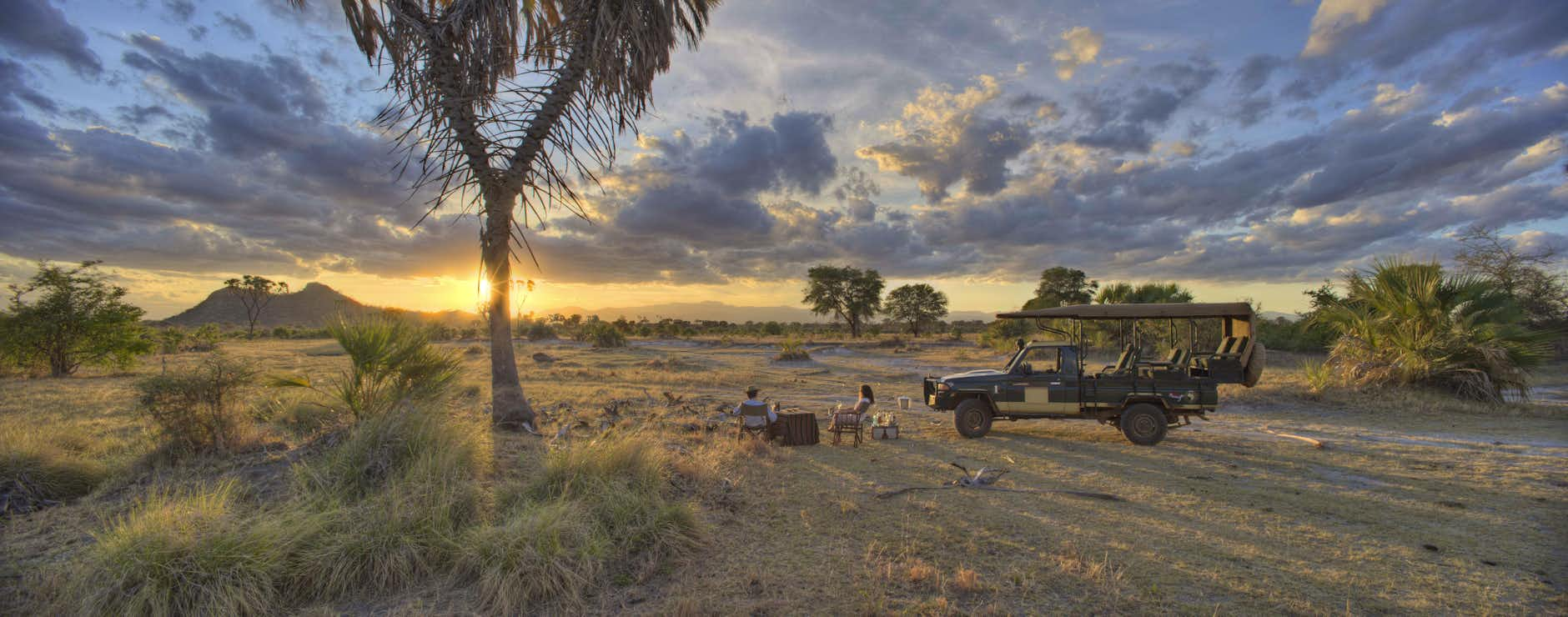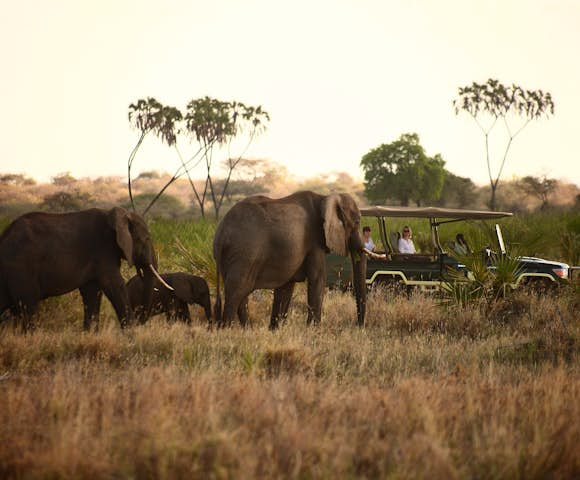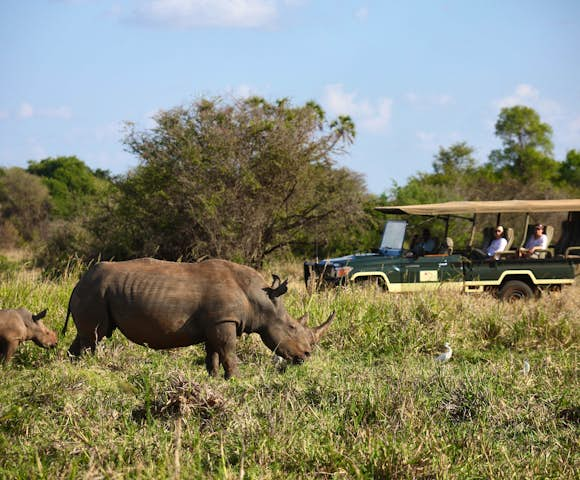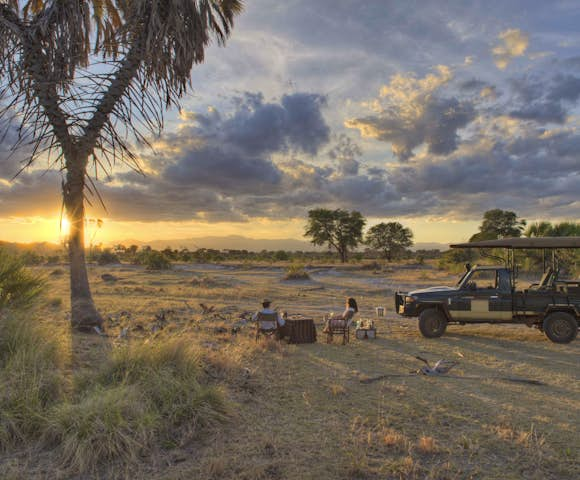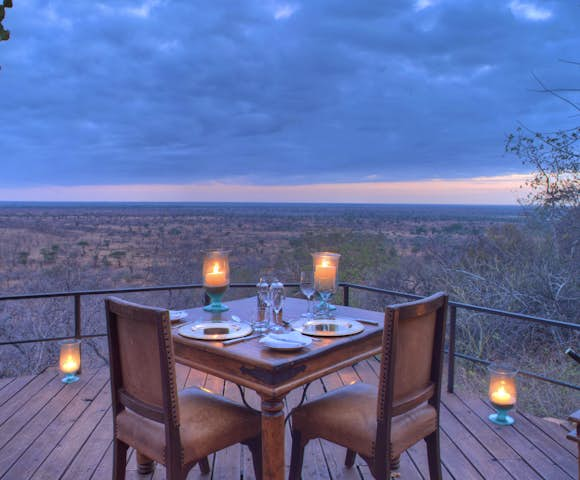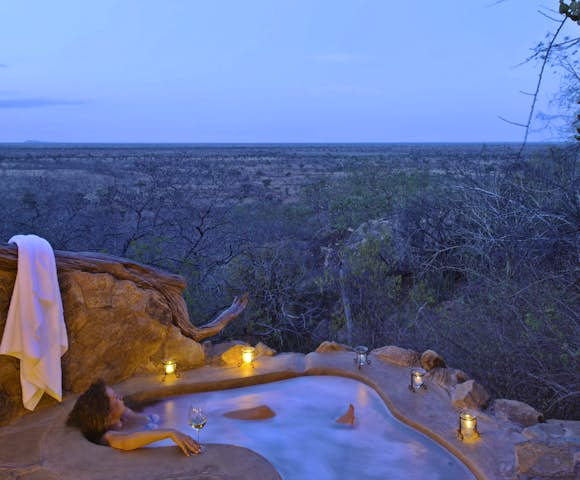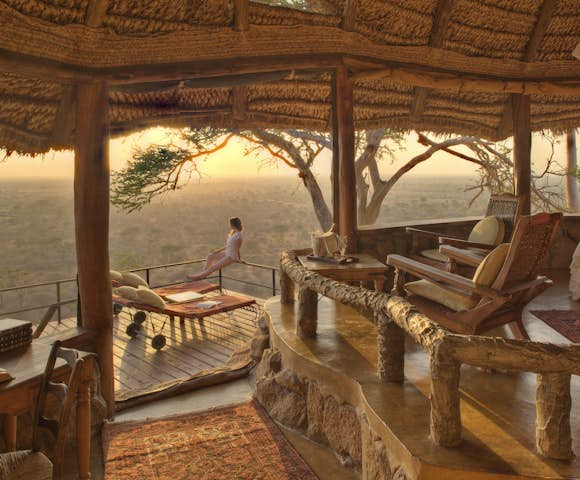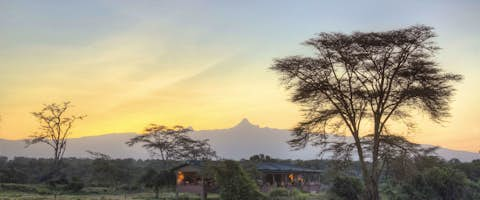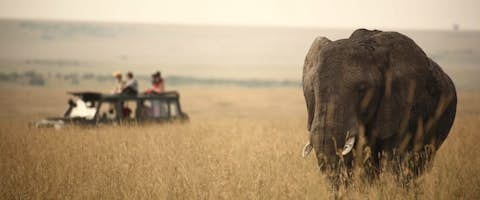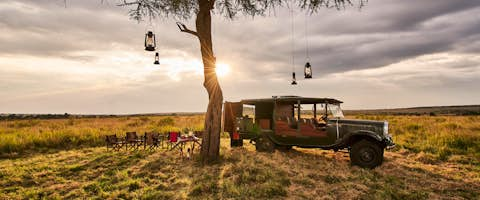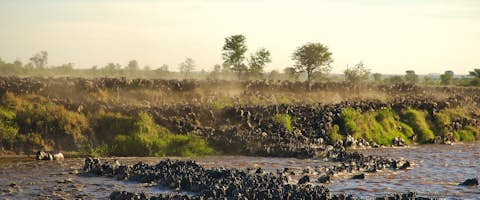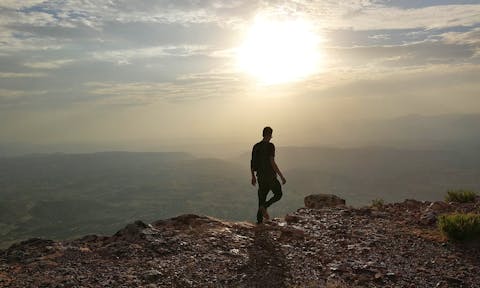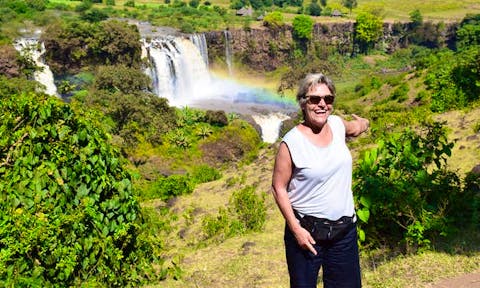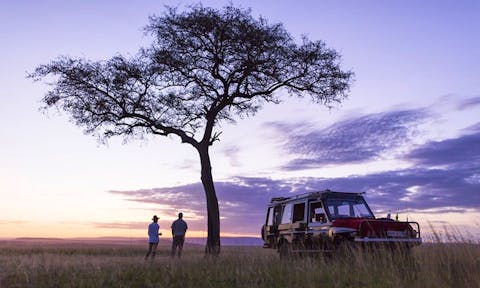Meru National Park, at a glance
Covering an area of 870 km², the national park has 3 distinct micro-ecosystems which support a diverse range of flora and fauna.
The northern third of the park is a bushland area; a vast sparse plain dotted with small groups of thinning trees.
East of the bush is a deep impenetrable tangle of overgrown shrubbery and towering trees. This ethereal, wet woodland is where most of the 13 rivers that intersect the park meet, joining, twisting and breaking from each other as they go.
Much of the rest of the park is covered in short savannah grass. From across the park, the towering Mount Kenya can be seen, watching over this paradise.

Walking safari, Meru National Park
Things to do in Meru National Park
Game viewing
The park is home to a huge variety of animals, including the Big Five: lion, leopard, rhinoceros, elephant, and Cape buffalo.
Zebras and gazelles are known to roam free across much of the park, grazing on dry yellow tufts of grass.
The rivers around the park are also home to a lot of wildlife. Within the murky depths, crocodiles lurk, waiting to pounce on anything brave enough to approach these shores.
Hippos can often be seen sunbathing on the banks of the various rivers and lakes across the park.
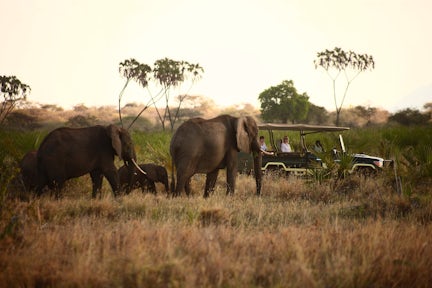
Day 2 game drive, Meru National Park
Black and white rhino sanctuary
The rhino sanctuary houses both black and white rhino.
Decades of poaching means these animals need serious protection, and there are a number of conservation initiatives across Kenya dedicated to the preservation of rhinos.
The 80km² sanctuary is ring-fenced and protected from poachers. This has led to the increase in the rhino population.
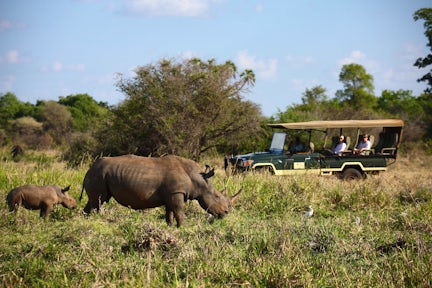
Meru is a sanctuary for endangered rhinos
Tana River
Most of the 13 rivers that bisect Meru National Park stem from the vast Tana River. The river spans over 1000km, and is the longest river in Kenya.
Starting in Nyambeni Hills, the river winds down the sloping foothills, splitting into smaller rivers at the other end of the park.
The river networks are the life-blood of Meru National Park.
Elsa the Lioness
Fans of the 1966 film Born Free will be familiar with Elsa the lioness.
Raised as orphans by George and Joy Adamson after the tragic death of her mother, the story of Elsa was immortalised in the 1966 film.
The burial site of Elsa the lioness is situated close to the former campsite of the Adamson’s.
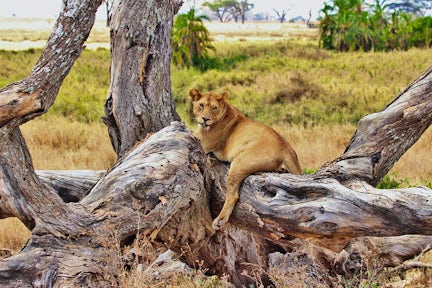
Popular Trips to Kenya
The tours below showcase just some of what is possible. Use these itineraries as starting points, or to draw inspiration. Then get in touch, and let our expert team help craft the perfect itinerary for you.
Where to stay in Meru National Park
Elsa’s Kopje
Laze around in a hammock at your private cottage, take a dip in the crystal pool and have a candlelit dinner on the rocky lookout.
Elsa’s Kopje is one of the best accommodation options in Meru National Park.
The lodge has fantastic views over the savannah plains from its vantage point on the slopes of the Mughwango Hills.
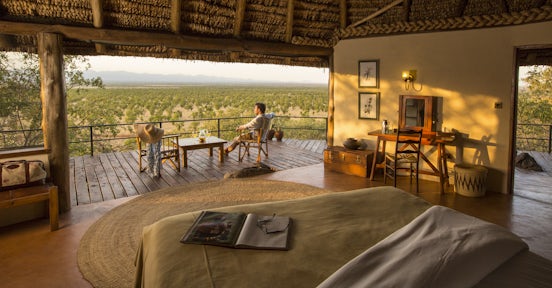
Family cottage, Elsa's Kopje, Meru
Rhino River Camp
The treetop Rhino River Camp offers a more rustic experience without compromising on luxury.
One of the more affordable camps on site, Rhino River Camp is a collection of small tented lodges nestled in the heart of a deep forest.
Rows of interconnected pathways link the lodges to the treetop lounge and bar.
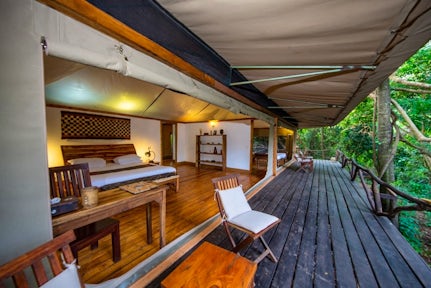
Ikweta safari camp
Encircled by an unending forest in all directions, this affordable tented lodge has a simple and minimalist feel.
The camp has a wonderful atmosphere amongst the natural landscapes that surround it, and has a long list of happy lodgers.
The lodges run around the perimeter of a large pool, and have great views of the rolling hills and savannah plains, a welcome retreat for weary travellers after a long day on safari.

Popular Trips to Kenya
The tours below showcase just some of what is possible. Use these itineraries as starting points, or to draw inspiration. Then get in touch, and let our expert team help craft the perfect itinerary for you.
Ready to plan your African adventure?
Listen
We'll spend some time listening to your aspirations, then discuss the kind of experience that might suit you.
Match
Next we'll discuss the options, shortlist the best trips for you and present you our impartial recommendations.
Reserve
We'll place a 24 hour hold on your preferred option - without obligation - whilst we talk through the details.
Whatever your budget, group size, length of stay, preferred activity or appetite for adventure, we can help.

